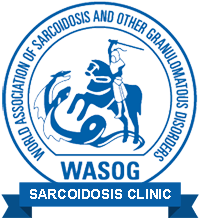The WASOG Sarcoidosis Organ Assessment Instrument: An update of a previous clinical tool
Keywords:
sarcoidosis, organ, diagnosis, consensusAbstract
Introduction: A Case Control Etiology of Sarcoidosis Study (ACCESS) sarcoidosis organ assessment instrument has been used for more than a decade to establish uniform standards for the probability of sarcoidosis organ involvement. The ACCESS instrument has become increasingly outdated as new technologies have been developed. Furthermore, the ACCESS instrument failed to address all possible organs involved with sarcoidosis. For these reasons, the World Association of Sarcoidosis and Other Granulomatous Diseases (WASOG) developed a new sarcoidosis organ assessment instrument.
Methods: Clinical sarcoidosis experts assessed various clinical manifestations for the probability of sarcoidosis organ involvement. Two criteria were required to apply this assessment: 1) histologic evidence of granulomatous inflammation of unknown cause in an organ that was not being assessed; 2) the clinical manifestation being addressed required that alternative causes other than sarcoidosis had been reasonably excluded. Clinical manifestations were assessed as either: a) highly probable: likelihood of sarcoidosis causing this manifestation of at least 90%.; b) probable: likelihood of sarcoidosis causing this manifestation of between 50 and 90%; c) possible: likelihood of sarcoidosis causing this manifestation of less than 50%. The sarcoidosis experts voted on the likelihood of sarcoidosis causing each manifestation using Delphi study methodology where at least 70% agreement of the experts was needed for consensus.
Results: Various clinical manifestations were classified as highly probable, at least probable, possible, or indeterminate when no consensus could be reached.
Conclusion: An instrument was developed by expert opinion that may be useful for the clinician and researcher in establishing criteria for sarcoidosis organ involvement.
Downloads
Published
Issue
Section
License
This is an Open Access article distributed under the terms of the Creative Commons Attribution License (https://creativecommons.org/licenses/by-nc/4.0) which permits unrestricted use, distribution, and reproduction in any medium, provided the original work is properly cited.
Transfer of Copyright and Permission to Reproduce Parts of Published Papers.
Authors retain the copyright for their published work. No formal permission will be required to reproduce parts (tables or illustrations) of published papers, provided the source is quoted appropriately and reproduction has no commercial intent. Reproductions with commercial intent will require written permission and payment of royalties.

This work is licensed under a Creative Commons Attribution-NonCommercial 4.0 International License.




